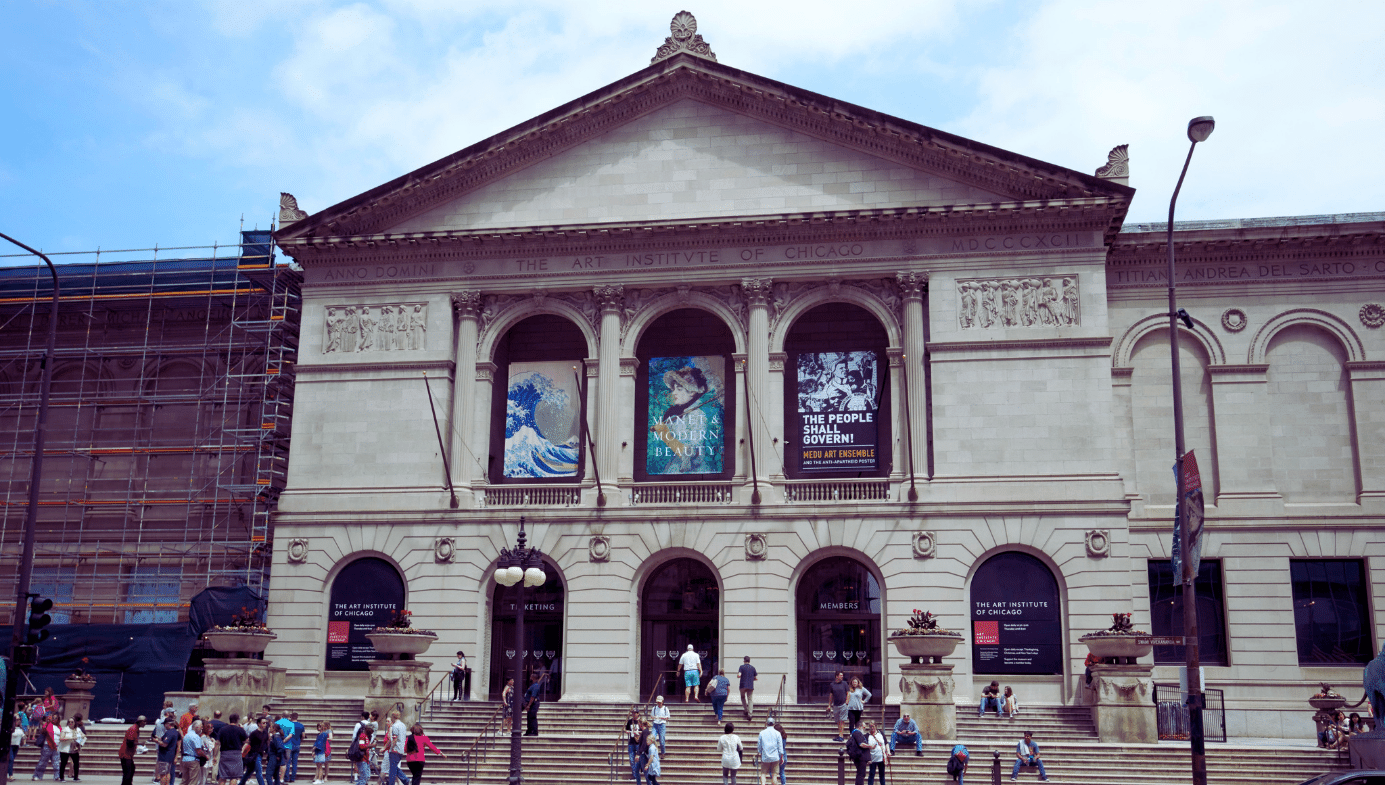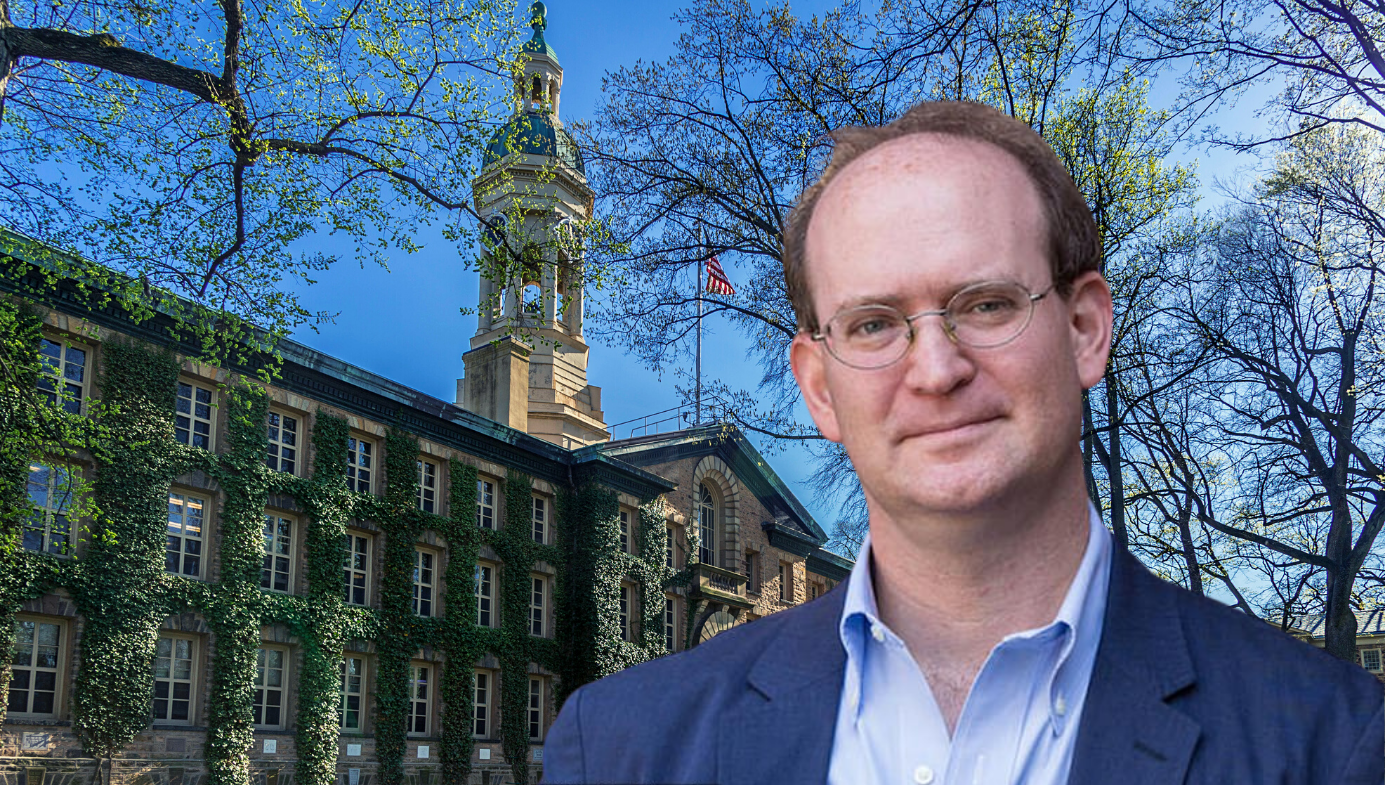Top Stories
Equity Concerns Lead to a Mass-Firing of Museum Volunteers
The firing of the AIC docents was only possible because unpaid staffers are not covered by its provisions, and the MMA was able to circumvent equal opportunity requirements by exclusively recruiting from local black colleges.

In the name of furthering the cause of racial equity, the Art Institute of Chicago (AIC) recently fired all of its 122 active docents, 82 of whom worked as volunteer educators and tour guides, and the remaining 40 of whom were employed as unpaid “greeters” for school groups. In a letter explaining why their services were no longer required (reproduced in full here), Veronica Stein, the AIC Woman’s Board Executive Director of Learning and Public Engagement, wrote:
As a civic institution, we acknowledge our responsibility to rebuild the volunteer educator program in a way that allows community members of all income levels to participate, responds to issues of class and income equity, and does not require financial flexibility to participate.
[…]
The museum aims to build a responsive, sustainable, and inclusive program that integrates the goals outlined in our strategic plan: to honor and embrace our civic role by investing in Chicago-area learners, educators, and creatives and to reinvigorate in-gallery learning programs to promote accessibility, equitable teaching approaches, and greater inclusion of visitors’ cultures.
Notwithstanding the ostensible beneficence of Stein’s bureaucratic jargon, its brutal meaning in plain English was that the existing docents, some of whom had worked at the museum for decades, were too white and too affluent to deserve continued employment. “Staff,” Stein enthused, “will design models for educator recruitment, training, and assessment, identifying and dismantling barriers that have historically limited participation.” The outgoing employees would therefore be replaced by a smaller but more diverse staff of professionals who would be paid $25 an hour. “All current volunteer educators,” Stein wrote, adding insult to injury as she ushered them through the exit, “are invited to apply for the paid museum educator positions” and would be provided with “complimentary memberships through 2023” as well as “exclusive access to two annual lectures presented at the museum.”
As a general matter, I am strongly supportive of efforts to correct the current racializing of museum employment, in which only the lesser positions—room guards, cafeteria and janitorial staff—are disproportionately staffed by black employees. This occupational imbalance arguably affects the perceptions of both black and white children attending museums as to divergent black and white societal roles. (Fred Wilson’s artwork, Guarded View, was an explicit attempt to draw attention to this issue.)
Nationally, docents are about two-thirds female and 80 percent white; only five percent are African American. These lopsided demographics can cause museums particular embarrassment when they exhibit the work of minorities. A lack of representation can also produce examples of unintended racial insensitivity. In a 2020 article for Slate, Palace Shaw reported the transgressions she observed when she worked as a “visitor assistant” at Boston’s Museum of Contemporary Art. White docents, it seems, sometimes had difficulty answering race-related questions from black students.
Nevertheless, I am profoundly troubled by AIC’s unnecessarily heavy-handed decision to fire its docents (not to mention its callous treatment of a loyal and dedicated workforce whose competence was not at issue). After all, many museums have been grappling with issues of representation for years and have made valuable progress without resorting to such a draconian measure.
For example, some museums like the Whitney only use docents to guide adult visitors, and rely on a younger and more diverse paid staff to run school-aged tours. Of the docents employed at Sacramento’s Crocker Museum in 2017, 33 percent had incomes of $150,000 or higher, 85 percent were white, and 88 percent were female. As a result, the museum undertook an extensive recruitment drive and, by 2019, only 16 percent of docents made more than $150,000 a year and 76 percent were white. (The article announcing these improvements, incidentally, begins with the admonition: “Few would argue against the idea that museums are the legacy of Western colonialism, serving as the products of straight, able-bodied, white, male privilege.”)
In 2015, the Baltimore Museum initiated an aggressive diversity campaign that successfully recruited a younger, more diverse group of docents to work with public schoolchildren in its Close Encounters program. However, the institution encountered substantial (and foreseeable) hiring difficulties, given the hours and training involved. Employment requirements included:
- Intensive training on Mondays, Tuesdays, and Wednesdays in August and September
- Twice-a-month Docent training on Mondays from September through May each year (9:45am–12pm)
- Availability for school tours on Wednesdays, Thursdays, or Fridays each week (Between 9:30am and 1:30pm)
- Willingness to lead experiences in classrooms in Baltimore City Public Schools as part of the Close Encounters program

As a result of the limited hours during which school trips attend museums, AIC’s new paid docents will be part-time (as is the case at almost all museums that have a paid staff). The Mississippi Museum of Art (MMA) may provide a template for implementation. There, graduate and undergraduate students from local black colleges are trained to teach K-12 audiences in return for stipends and/or college credits. It is unclear, however, how the MMA handles its adult tours.
But activists have grown impatient with the pace of incremental change brought about by conventional methods, and are now forcing the issue in ways that may be detrimental to the institutions their reforms are intended to benefit. In a September 13th letter (also reproduced here) to AIC president James Rondeau on behalf of the sacked staff, the museum’s Docent Council itemised their qualifications as follows:
- Trained by AIC staff, 18 classes of docents have been part of this storied program. Currently, the corps consists of 82 active docents and 40 school group greeters.
- Engaged in 18 months of twice-a-week training to qualify as a docent, five years of continual research and writing to meet the criteria of 13 museum content areas, and monthly and bi-weekly trainings to further educate ourselves with the materials, processes, and cultural context of the AIC’s 300,000 works of art.
- Researched and wrote, throughout our tenure as docents, peer- and staff-reviewed object research papers, object lessons plans, and tour outlines. Docents have completed more than 1,050 such papers to represent the AIC collection accurately in their tours.
- Led in-gallery tours for K-12th grade students, with up to 25 people, and adult/family tours with 10–50 individuals. Facilitated up to two 60-minute, in-gallery student tours per day, often with a different theme/object for 18 weeks of the academic year, plus a minimum of 24 one-hour tours with adults/families.
- Facilitated virtual tours to students, conducted by 10 volunteer docents trained and experienced in this type of tour. With more than 50 docent-led virtual tours, the spring 2021 rollout of this new AIC initiative demonstrates the growing need to meet the demand for accessible arts education in an elearning environment. The dismissal of these 10 docents diminishes widespread opportunities for teachers and their students.
- Spent an average of 15 years of volunteer service dedicated to training, research, collaboration, and facilitating the highest-quality tours worthy of an AIC program.
This expertise and experience, accrued over years of devoted study, will not be easily replaced. As is often the case when equity concerns trump equal opportunity policies, there may be pressure to shade skill requirements in favor of meeting diversity quotas. While newly trained students may be sufficiently qualified to conduct K-12 tours, they may struggle to lead adult tours, particularly when exhibitions require specialized knowledge.
Additionally, the idea that simply hiring more nonwhite docents will solve the problems of racial insensitivity is itself fraught with problems. Is there any reason to believe, for instance, that Asian American or Latino docents will be any better suited to guiding tours of exhibits by black artists than the white docents they replace? And will an individual from, say, a black Latino background have the sensitivity and understanding required to explain the work of an African American or Caribbean artist? Must Latino exhibits be guided by Latino docents, Chinese exhibits by Chinese docents and so on?
Finally, attempts to hire staff on the basis of race not only does violence to fundamental notions of fairness, it also violates existing civil rights legislation. The firing of the AIC docents was only possible because unpaid staffers are not covered by its provisions, and the MMA was able to circumvent equal opportunity requirements by exclusively recruiting from local black colleges. Indeed, much of the recent diversity recruitment and funding by major corporations was directed to the historically black colleges and universities for this very reason. These practises may not violate the letter of civil rights law but they indubitably violate its spirit. And, as I have pointed out elsewhere, Latino representation continues to be an afterthought, even though the share of Latino children in many urban areas, including New York City, is much larger than that of black children.
Museums with the funds to follow AIC’s lead face significant practical, legal, and ethical difficulties implementing the reforms that anti-racist activists insist are both urgent and necessary. Even if they are able to surmount these obstacles, they may be forced to sacrifice experience on the altar of diversity by hiring on the basis of skin color rather than expertise—a grave disservice to the paying attendees museums hope to serve and inform. It is hardly surprising that the move was greeted by a storm of controversy, including a particularly scathing editorial in the Chicago Tribune. We must hope that legitimate diversity objectives can be accomplished without allowing an excessive preoccupation with racial goals to undermine the important tasks that museums were established to perform.






